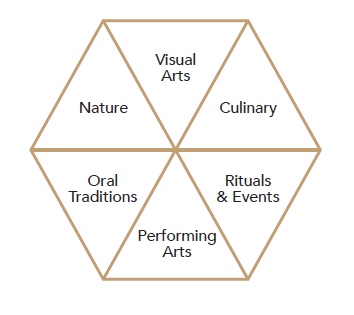Excerpt from our Cultural Tourism Whitepaper, available via newsletter sign-up: http://eepurl.com/bM3KBX

THE BROAD PERSPECTIVE & THE SIMPLE PREMISE
The most comprehensive view of cultural tourism comes from the World Trade Organization. Based on 2012 global survey, they identified six categories:
- Handicrafts and visual arts
- Gastronomy and culinary
- Social practices, rituals, and festive events
- Music and performing arts
- Oral traditions and expressions
- Knowledge and practices concerning nature
They consider these “pivotal areas” to be the basis of cultural tourism success.
To the extent a local planning or leadership team can discover, develop, package, and promote these six aspects of local culture, a destination can build a more robust tourism program. The obvious implication is that most destinations do not necessarily have an even or symmetrical understanding across the six areas. Some areas are well-developed strengths while others are not well understood and/or represent latent opportunities at best. So, optimization across the six categories is the hallmark of an effective program. And, program optimization depends on a process.
Our premise is two-fold: First, tourism promotion is more effective when the destination is connected to a strong branding idea. Brands create interest, relevancy, and differentiation. A set of assets are more easily understood and remembered when they are associated with a brand idea. Second, local culture and the branding idea that supports it are more discovered than they are created. Therefore, a discovery process is necessary to understand and gain consensus around a set of marketable ideas.
